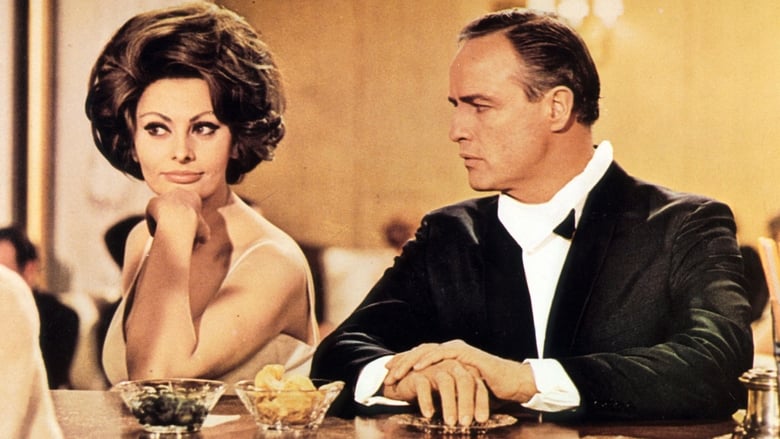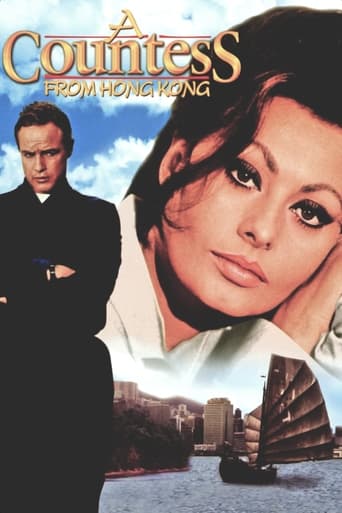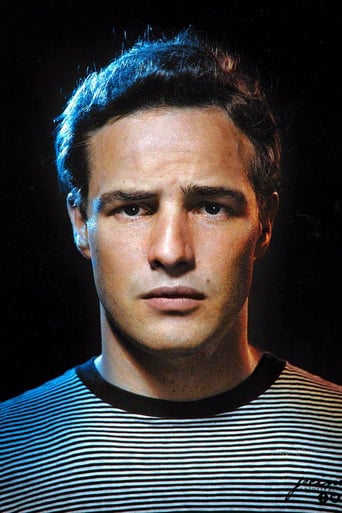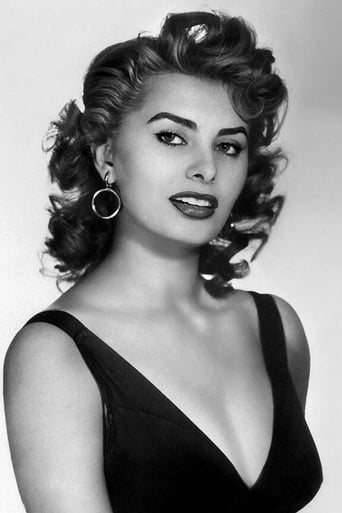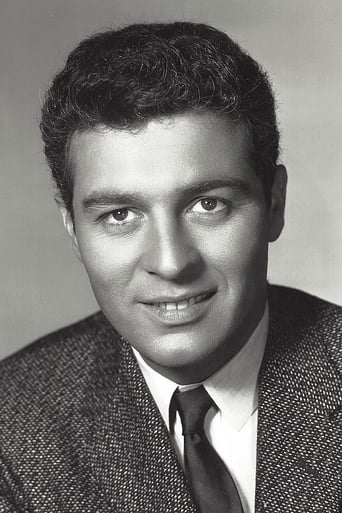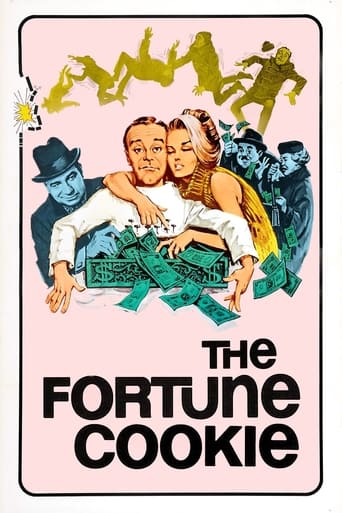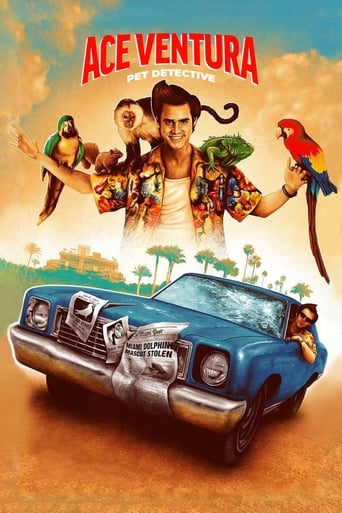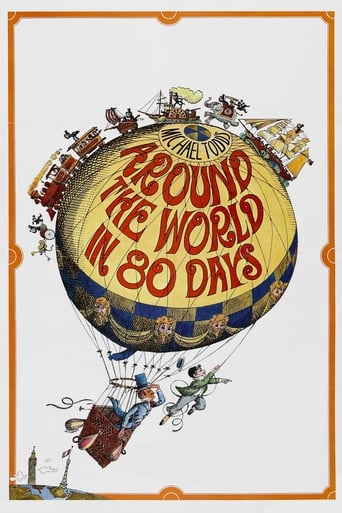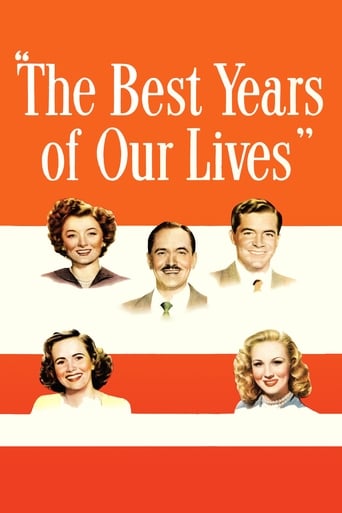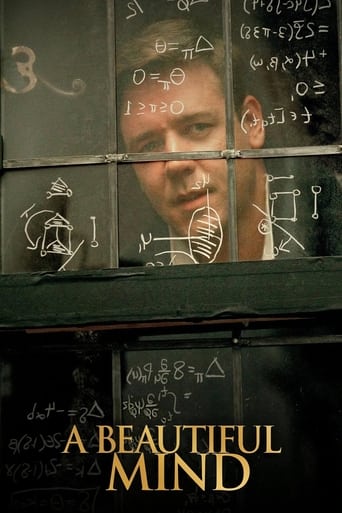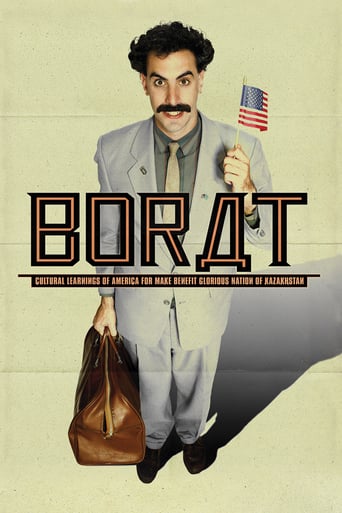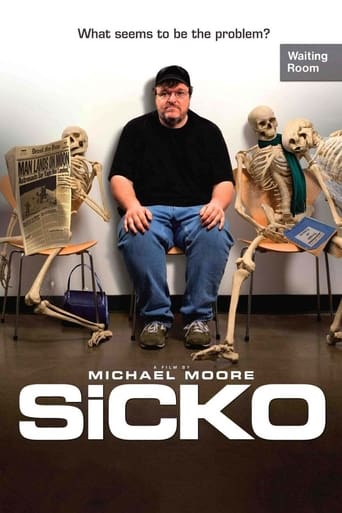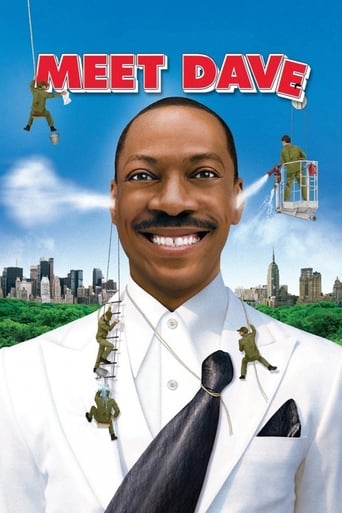A Countess from Hong Kong (1967)
A Russian countess stows away in the stateroom of a married U.S. diplomat bound for New York.
Watch Trailer
Free Trial Channels
Cast


Similar titles
Reviews
Tied for the best movie I have ever seen
Expected more
Fun premise, good actors, bad writing. This film seemed to have potential at the beginning but it quickly devolves into a trite action film. Ultimately it's very boring.
Amazing worth wacthing. So good. Biased but well made with many good points.
A Countess from Hong Kong (1967)** (out of 4) The wealthy Ogden Mears (Marlon Brando) is in Hong Kong where he is partying a bit one night and then wakes up the next morning with his ship on its way to the next location. The only problem is that Natascha (Sophia Loren) has decided to stowaway on the boat and Mears must keep her hidden so that no one sees her.A COUNTESS FROM HONG KONG would turn out to be the final film from the legendary Charles Chaplin. It's really too bad this film was so lame and it's just shocking because you've got Chaplin, Brando and Loren. Three legends of the big screen and it turns into a movie like this. It seems everyone hated one another but this here really doesn't show on the screen. The biggest problem is that this film was simply made thirty years too late.I say that because the structure is something you'd see from a screwball comedy in the 1930s. I mean, why in 1967 would someone be worried about a woman being found in his room? There are many scenes where the two are frantically going from one hiding spot to the next and Brando takes a couple falls along the way. It's just not that funny. In fact, very little is actually funny here and while it's an okay time killer, the film just never adds up to much.I thought Loren was good enough in her role. She's strikingly beautiful and her in that white evening gown was one of the few highlights. As far as Brando goes, yeah, this wasn't the type of role for him. Apparently Chaplin wanted Cary Grant or David Niven and Brando certainly isn't either of them. He's way too stiff in the part and the constant fighting between him and Chaplin behind the camera probably didn't make him want to be much better. He's not horrid in the part but it's clear that he's not right for it.A COUNTESS FROM HONG KONG has pretty much been forgotten over the years and it's easy to see why. The film isn't quite as awful as its reputation but when you've got three legends in one movie you just expect more.
This is a brief review of Charlie Chaplin's last six feature films.A comical take on Lang's "Metropolis" (1927), Chaplin's "Modern Times" opens with the words "a story of industry and individual enterprise, humanity crusading in the pursuit of happiness!", an ironic jab at the mantras of industrial capitalism. The film then finds Chaplin reprising his iconic role as "the tamp", a poverty-stricken but lovable outcast whose ill-fitting clothes epitomise, amongst other things, his inability to fit in.The film watches as the tramp struggles to survive in a depressed economy. Like "Metropolis", it satirises labour, management and dehumanising working conditions. Elsewhere life for the worker is seen to be precarious, alternatives to playing the game are but death or prison, giant clocks speak to the daily grid of blue-collar workers, bosses are shown to be obsessed with speed and production, the property class relies on police brutality and all-encompassing surveillance, and the workplace itself is painted as an absurdest torture chamber. The film ends with the tramp on a road, America's future uncertain."Modern Times" made waves when it was released. It was banned in fascist Germany and Italy, then allies of the West, and scorned by those in power in the United States. It was also heavily praised in the Soviet Union and France, particularly by philosophers Jean-Paul Sartre, Simone de Beauvoir and Maurice Merlau-Pony. The film's middle section, which featured Chaplin waving a red flag and unwittingly leading communists and worker unions, would get Chaplin on several government watch-lists.Chaplin followed "Times" with "The Great Dictator". Hollywood studios wanted the film scuttled, so Chaplin financed it himself. It contains two criss-crossing plots, one about a Jewish barber who is essentially persecuted by Nazis, the other about a brutal dictator, a stand in for Adolf Hitler. Funny, scary and sad, the film would rock the US establishment. Hitler was, at the time, a US ally and good for business. What's more, he was viewed by those in power as a tool to destroy communist Russia. For many, Chaplin was a "subverisive" who was "inciting war with an ally". Deemed particularly offencive was a last act speech in which Chaplin urges the people of the world to "love one another", "throw away international barriers" and foster an "international brotherhood". Though deliberately vague, this speech was viewed as inflammatory. Was Chaplin extolling the virtues of the United States or the Soviet Union? Regardless, the US' approach to the conflicts in Europe promptly shifted. It became an ally with Russia, Hitler became the enemy and Germany attacked Russia. In the blink of an eye, "Dictator" went from being sacrilege to prophetic.Chaplin, British, was born into extreme poverty and often found himself sleeping on the streets of London. As such, he identified with his "tramp" character completely, as did millions word-wide, who saw themselves in the tramp: desolate, poor and forever bumbling down life's highways. Prior to shooting "Times", Chaplin would embark on a tour of the world, intent on seeing the effects of poverty. He'd talk to many prominent figures, most notably Churchill, George Bernard Shaw, Einstein and Gandhi.As Chaplin grew in consciousness, so would FBI files on Chaplin. He was put under government surveillance and forced to appear before a Senate subcommittee in 1941 where he was accused of being "anti American" and an "unofficial communist". Many newspapers, including the Times, began a campaign attacking Chaplin, and called for his deportation. In the mid 1940s he was charged with the Mann Act and the FBI would collude with newspapers to smear Chaplin as a sex maniac who "perverted American culture". From here on, conservative political pressure groups would attack each new Chaplin release. Some of his films would be boycotted or outright banned. In 1947 he'd be brought before the HUAC committee.Chaplin followed "Dictator" up with "Monsieur Verdoux". A black comedy, the idea for which came from Orson Welles, the films stars Chaplin as a bank clerk who loses his job and so murders women for cash and land. The film's point is explicit: if war is an extension of diplomacy, then murder is the logical extension of business. And so banking terminology is used to rationalise murder, weapons manufactures are idolised and the poor are condemned for trying to play by the rules of the wealthy. "Numbers sanctify!" Chaplain says, pointing to Hiroshima, Nagasaki and the ruthlessness of post-war capitalism; kill millions and you're a hero.Next came "Limelight", Chaplin's ode to silent film. Elegiac and autobiographical, the film stars Chaplin and the legendary Buster Keaton as two fading comedians. A meditation on time's passing, the film's also relentlessly optimistic; man must assert his will, his desires, no matter how glum the times! The film would be banned from several US theatres. Chaplin himself was swiftly banned from entering the US and several of his assets were seized. He'd live in Switzerland henceforth."A King In New York" followed. It finds Chaplin playing an usurped "dictator" who seeks refuge in America. Also autobiographical, the film pokes fun at various aspects of US culture, its irrational hatred of all things left-wing and the way in which humans are both always branding and refuse to look beyond the political, beyond superficial branding, to tolerate even the slightest bit of difference or dissent. Chaplin's son would play a hilarious anarcho-communist, but the film as whole messily mixed silent gags with sound comedy.Chaplin's "A Countess from Hong Kong" confirms that Chaplin's films were moving from the lower to the upper echelons of society. Here Sophia Loren plays a Russian "tramp" who is taken in by a wealthy politician (Marlon Brando). His worst feature, the film watches as "humane" capitalism benevolently absorbs the "detritus" of Russia and Asia. Chaplin accepted an honorary Oscar in 1972. He received the longest standing ovation in Oscar history.4/10
It is gratifying to see such understanding reviews! This film was savaged at the time it was released, partly because it was considered old fashioned, but partly also because Chaplin's reputation and entire artistic legacy were under attack from reactionary critics. The negative view of this movie as a "bomb" persisted for decades. I recommend producer Jerry Epstein's book of memoirs, "Remembering Charlie", for an enlightening description of the process of making this film and its aftermath. The book goes on to give a haunting description of Chaplin's unfinished final film, "The Freak." It is a pity he could not make it.
It's a shame that such a genius went out with a whimper. However, I think that is the case with A Countess from Hong Kong. The staging and timing all would work with a silent movie, but not with a talkie. Particularly annoying was the "comical" use of the door buzzer. That gave the whole thing a 30's screwball comedy feeling. The players were trying to mimic how the Little Tramp would have reacted to the stimulus and it didn't work. The cameo by Chaplin as the old steward was interesting. We get a final view of him in good health and full Technicolor and sound.Frankly, I had trouble staying awake through the whole thing. It hardly compares with Modern Times or my favorite, The Great Dictator.

